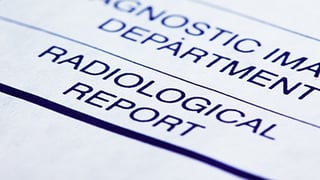 A recent study[1] published by the Journal of the American College of Radiology concludes that clinicians prefer radiology reports in a more structured format over those in a “more traditional, prose style”. This finding supports the position we at Healthcare Administrative Partners have long advocated. Our May 2016 article points out the many benefits of structured reporting, which include easier transition to clinical decision support systems, compliance with quality reporting standards, and fewer denials from payers for questions of medical necessity or coding at the appropriate level of service.
A recent study[1] published by the Journal of the American College of Radiology concludes that clinicians prefer radiology reports in a more structured format over those in a “more traditional, prose style”. This finding supports the position we at Healthcare Administrative Partners have long advocated. Our May 2016 article points out the many benefits of structured reporting, which include easier transition to clinical decision support systems, compliance with quality reporting standards, and fewer denials from payers for questions of medical necessity or coding at the appropriate level of service.
An often-overlooked benefit of structured reporting is its ability to facilitate retrospective analysis of radiology reports for various purposes. Our Clinical Analytics Services team came to realize this in a big way when they developed a solution to identity patients with incidental lung nodule findings. Traditional reports were inconsistent in their description of the lung nodules, and recommendations for follow-up varied widely. Structured reporting allows the use of discrete data fields rather than free text, which can then be more easily searched to answer research questions not contemplated at the time of the original reporting.
Changing the work habits of radiologists will be a challenge. If a practice decides to embark on the path toward structured reporting, having a physician champion who will take the lead and monitor the progress of the program will go a long way toward making it a success.
Input from the practice’s billing staff or revenue cycle management company is also critical to be sure coding requirements are met in the structure of the report templates. For example, procedures such as 3D reconstructions for CT angiography have technical elements that must be documented for billing purposes. Other studies have a list of anatomical structures that must all be mentioned in the report (liver, common bile duct, gallbladder, spleen, inferior vena cava, kidneys, pancreas and upper abdominal aorta for complete abdominal ultrasound). If a structure is missed in the report, even if it was performed, the exam will be down-coded and will receive lower reimbursement. The reporting templates will also have to comply with the requirements of the Medicare Incentive-based Payment System (MIPS) under the Quality Payment Program. The time spent on these details at the outset will be repaid by quicker, easier and better documentation resulting in more assurance of proper reimbursement in the long run.
While building complete and comprehensive templates seems like a daunting task, in reality a lot of the work has already been done. The Radiology Society of North America (RSNA) has been developing radiology reporting templates since 2008, and their library is available online at no charge.
The shift toward structured reporting has already begun in many academic radiology departments. Radiologists are finding that they are not restricted by the format, and in fact the pre-defined layout gives them peace of mind that they have included all of the reporting elements necessary for the exam, allowing them to focus more on the clinical interpretation than the reporting requirements.
Subscribe to this blog to stay up to date on all matters related to radiology revenue cycle management. Check our web site for additional information on documentation best practices, MIPS, clinical analytics based solutions and more.
Sandy Coffta is the Vice President of Client Services at Healthcare Administrative Partners.
[1] Structured Reporting in the Academic Setting: What the Referring Clinician Wants
Jason D. Lather, MD, Zheng Che, BS, Barbara Saltzman, PhD, MPH, Jacob Bieszczad, MD. DOI: https://doi.org/10.1016/j.jacr.2017.12.031
Recent Articles:
How Radiology Practices Can Drive True Quality of Care
A Radically Traditional Perspective on Building Radiology Practice Value
How Important Is The MIPS Cost Category to Radiology Practices?




